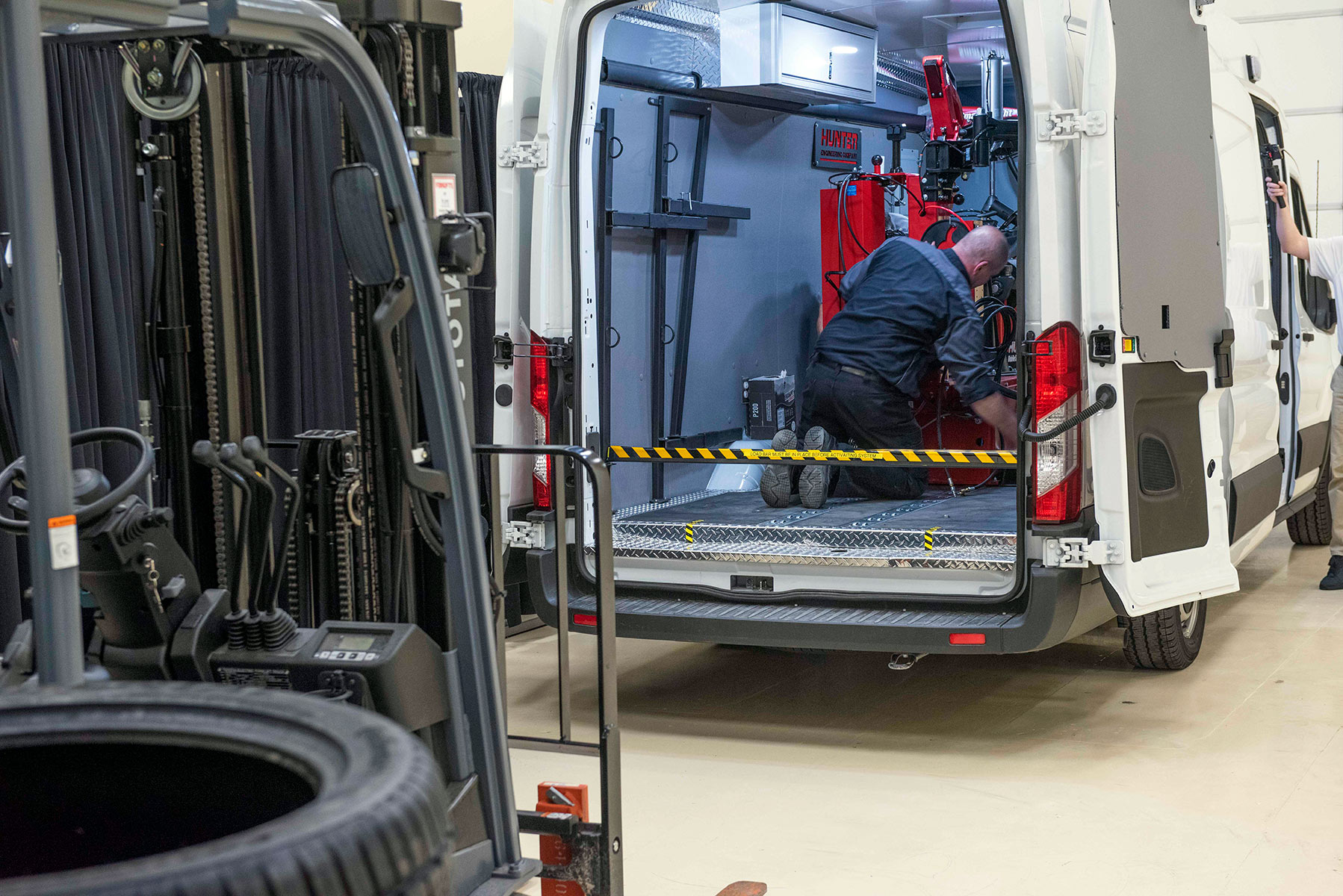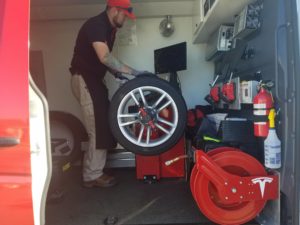Quick and Expert Mobile Tire Repair Las Vegas Services
Quick and Expert Mobile Tire Repair Las Vegas Services
Blog Article
Tire Solution: Proven Approaches for Optimal Tire Upkeep and Care
From making sure appropriate tire pressure to normal rotation and positioning, there are tested techniques that can significantly expand the life expectancy of your tires and enhance general driving experience. Let's dive right into the world of tire service and find the secrets to keeping your tires in top-notch shape for the long haul - Mobile Tire Repair Las Vegas.
Significance of Tire Stress
Appropriate tire pressure is an essential consider guaranteeing optimum car efficiency and safety and security when driving. Maintaining the advised tire pressure degrees provided by the manufacturer supplies many benefits. Ample tire stress promotes better fuel performance, as under-inflated tires can lead to increased rolling resistance, triggering the engine to work tougher and eat even more fuel. Correct tire pressure ensures even step wear, enhancing tire durability and conserving cash in the lengthy run by postponing the requirement for early substitutes. In addition, effectively inflated tires add to improved handling and braking abilities, crucial for risk-free driving in various roadway problems. Over-inflated tires, on the other hand, can lead to lowered traction and a harsher adventure. Conversely, under-inflated tires are prone to getting too hot, which can bring about accidents and blowouts. On a regular basis checking and changing tire pressure, specifically before lengthy journeys, is an easy yet reliable way to boost automobile efficiency, prolong tire life expectancy, and prioritize safety and security when traveling.
Tire Rotation Standards
When taking into consideration tire rotation standards, it is important to recognize the significance of this upkeep task in making the most of tire life-span and preserving ideal vehicle performance. Tire rotation includes changing the placement of each tire on a vehicle to guarantee even step wear. Front tires often tend to use extra quickly than rear tires due to steering forces, making regular turning crucial for well balanced wear patterns.

Advantages of Wheel Alignment
Making certain appropriate wheel positioning after tire rotation is important for keeping balanced wear patterns and making best use of vehicle efficiency. Wheel alignment describes the adjustment of the angles of the wheels to the manufacturer's specifications. One of the crucial benefits of wheel positioning is enhanced steering and handling response. When the wheels are properly lined up, it decreases guiding effort, ensuring a smoother and extra regulated driving experience. In addition, right wheel positioning aids to prolong the life-span of your tires. Misaligned wheels can cause uneven tire wear, leading to early tire replacement and raised upkeep costs.

Tire Tread Deepness Inspect
Executing a normal assessment of tire tread deepness is important for preserving secure driving conditions and prolonging the lifespan of your tires. The tread on your tires plays a crucial role in supplying traction, particularly in wet or slippery conditions. To inspect your tire step depth, you can make use of a tread depth gauge or the dime test. The suggested tread deepness is at least 2/32 of an inch. If the tread deepness is below this limit, it is time to change your tires to make certain optimal performance and safety when driving. Irregular tread wear can indicate issues with tire suspension, pressure, or positioning, highlighting the significance of routine tread depth checks. Overlooking to monitor and maintain proper tread depth can bring about lowered hold, longer stopping distances, and an increased threat click to investigate of hydroplaning. By integrating tire walk deepness check out your regular upkeep timetable, you can drive with self-confidence recognizing that your tires are in top problem.
Seasonal Tire Examination
Seasonal tire examination is an essential facet of tire maintenance that makes sure tires are prepared to encounter the difficulties posed by different climate conditions. In preparation for winter, it is essential to inspect the tire pressure regularly as chilly temperature levels can create tire stress to drop. By conducting regular seasonal tire assessments, vehicle drivers can extend tire life-span, improve gas efficiency, and most importantly, guarantee a safe driving experience in varying weather problems.
Final Thought
Finally, keeping appropriate tire pressure, turning tires routinely, lining up wheels correctly, keeping an eye on walk deepness, and performing seasonal assessments are important techniques for optimum tire care. By adhering to these verified methods, drivers can guarantee their tires last much longer, do far better, and add to general car safety. It is very important to focus on tire upkeep to stop mishaps, boost fuel performance, and lengthen the life expectancy of tires.
Adequate tire stress advertises better fuel performance, as under-inflated tires can lead to raised rolling resistance, causing the engine to function harder and take in even more fuel.When considering tire turning standards, it is necessary to recognize the importance of this upkeep task in making the most of tire life-span and maintaining optimum automobile efficiency. Seasonal tire that site inspection is a fundamental facet of tire upkeep that guarantees tires are all set to deal with the difficulties posed by various weather conditions. By conducting regular seasonal tire Mobile Tire Replacement Las Vegas assessments, drivers can extend tire life expectancy, improve gas efficiency, and most importantly, make certain a secure driving experience in differing weather problems.
In conclusion, keeping appropriate tire pressure, rotating tires regularly, lining up wheels correctly, keeping track of tread depth, and conducting seasonal examinations are important practices for optimum tire treatment.
Report this page